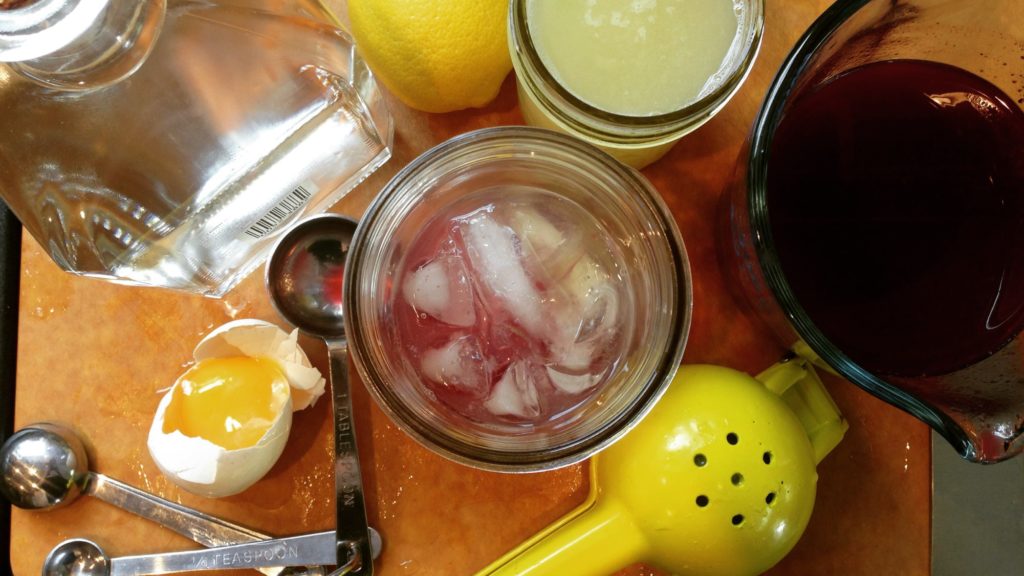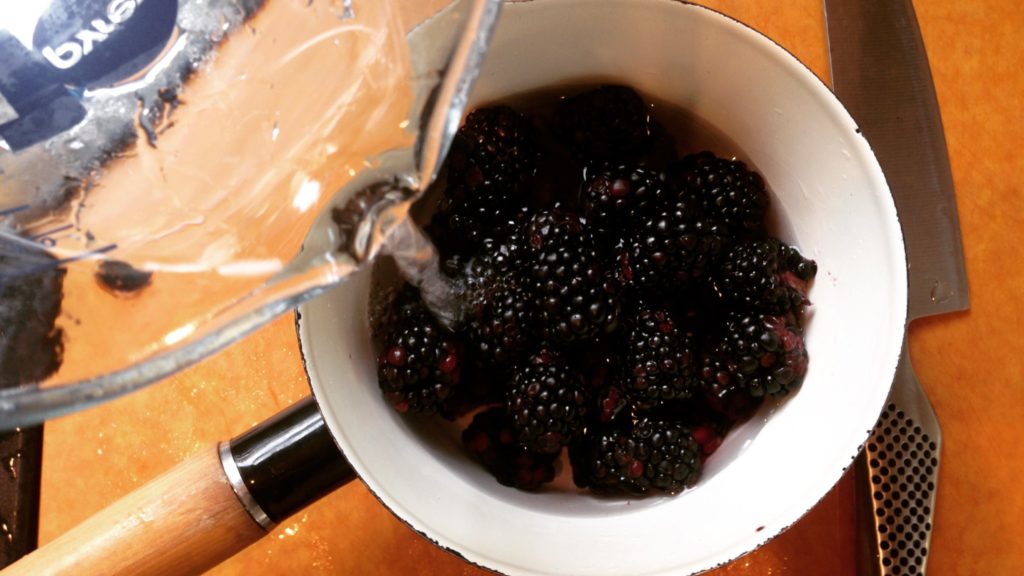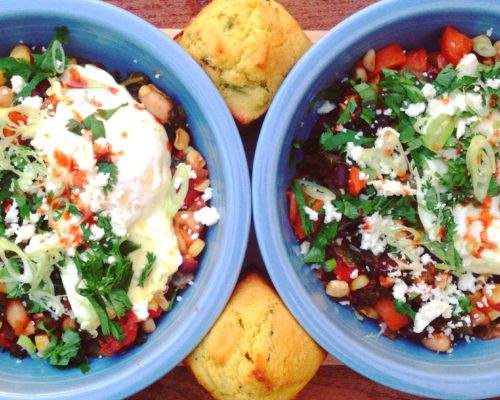Pub Trivia
Question 1
You sidle up to the bar and order a “sour”.
What drink does the barkeep set on the counter?
Question 2
What are the main ingredients of this beverage?
Answer Key
Did whiskey sour and sour mix come to mind? You’re not wrong. You’re just…
Well, there’s more to it than that. For along with whiskey sour (and pisco sour, for Peruvians and the exceptionally worldly) correct answers include gimlet, daiquiri, lemon drop, sidecar, margarita, and caipirinha, to name just the most common few.
And sour mix? That’s the last thing you should pour into any of them.

The Sour Secret
A sour, you see, is not a singular drink. It is a formula. A formula so simple and powerful that it secretly underlies the great plurality of cocktails. This is that formula:
4 parts Liquor
Light or dark, old world or new, truly any booze will do.1 Fleshing out the examples above,
- Whiskey makes a whiskey sour
- Gin, a gimlet
- Light rum, a daiquiri
- Vodka, a lemon drop
- Brandy, a sidecar
- Tequila, a margarita
- Cachaça, a caipirinha
2 parts Citrus
Fresh-squeezed is absolutely essential. If all you have is bottled, use it to clean your ivory (not an innuendo) and pour a glass of wine.
- Lemon, with its classical associations.
- Lime, which has tropical overtones.
- Orange is more sweet than tart: use in combination with lemon or lime, or dial back the sweetener to compensate.
- Grapefruit too can be on the sweet side. Taste towards perfect tartness-sweetness balance.
1 part Syrup
“Syrup” is specified because it mixes easily and works at precisely this proportion:
- Simple syrup: heat equal parts water & sugar until dissolved.
- Honey syrup: heat equal parts water & honey until dissolved.
- Herb syrup: infuse any aromatic in water; strain; dissolve an equal measure of sugar.
- Fruit syrup: boil any fruit(s) in water to cover; strain; dissolve an equal measure of sugar.
- Maple syrup: straight out of the jug. If your cocktail isn’t already brown, it will become so.
- Grenadine: if you simply must use a processed product.
But other sweeteners work just as well in different (yet logical) proportions. Dry sugars aren’t watered down, so they’re twice as potent:
- (1/2 part) super-fine sugar: because good luck dissolving regular granulated sugar.
- (1/2 part) brown sugar: when it’s still fresh and moist, it can dissolve decently.
On the other hand, sweet liqueurs tend to be about half as sweet as syrup: use twice as much.
- (2 parts) Triple sec or its fancier analogues are utilized in our margarita and sidecar
- (2 parts) Limoncello makes for an especially lemony lemon drop
- (2 parts) Rose’s lime: not exactly a liqueur, but functions similarly. Not as good as fresh, but at least it has history. It’s tart, so can stand in for both sweetener and citrus. See classic gimlet.
1 part Egg White?
Once shaken2, egg white adds a foamy head, lightening of color, velvety mouthfeel, and slightly astringent effect. Oh yeah, and a warning: “Consuming raw or undercooked meats, poultry, seafood, shellfish, or eggs may increase your risk of foodborne illness.” Egg white is all but required in a pisco sour, somewhat common in a whiskey sour, and totally your call in the sours you invent.

Sour Math
Proportions may vary
Look up any of the cocktails above, and you’re likely to find something other than a precisely 4:2:1:1 ratio. Then again, few recipes can agree on what the right proportions should be for even the most classic cocktails. That’s because it doesn’t matter: great cocktails are made with great ingredients, not measurements accurate to the third significant figure. 4:2:1:1 is memorable and reliable, and you can always taste, adjust, and tune your tipple to transcendence.
Multiplication tables
Cocktails for one? Not much fun. Neither are fractional measurements, nor dosing out half an egg white. Our master ratio avoids them all. Here’s how it plays out in a few common situations:
- 2 drinks with a jigger: 4 oz liquor, 2 oz citrus, 1 oz syrup, (1 egg white)
- 2 drinks with a 1/8th-cup measure: 4 pours liquor, 2 pours citrus, 1 pour syrup, (1 egg white)
- 4 drinks in a 2-cup liquid measure: pour liquor to the 1 cup line, add citrus to the 1 1/2 cup line, add syrup to the 1 3/4 cup line, (add egg white to the 2 cup line)
More variables for more variety
Even with the incomplete lists of options above, we have 7 liquors * 4 citrus juices * 24 sweeteners3 * the binary egg white option = 1344 different cocktail possibilities. If that’s not nearly enough, there’s more you can vary:
- Infusion: Muddle in fresh herbs or fresh fruit. Lemon basil margarita? Strawberry mint daiquiri?
- Confusion: Use a blend of liquors, citrus juices, or sweeteners instead of selecting just one.
- Preparation: Instead of shaking and straining, you might build the drink in the glass—perhaps even muddling whole citrus sections as in the caipirinha.
- Presentation: Rim the glass with salt (margarita), sugar (lemon drop), or either of those combined with any other powdered spice. Garnish, simply or aggressively.
A case study
“Great ingredients” doesn’t have to mean “expensive ingredients”, and on a rainy day in Bozeman, I found some fine ones on the produce discount rack. Browning lemons are apparently considered unsaleable, but proved far juicier than the rock-hard “fresh” green ones. The organic blackberries would not have been especially appetizing on a cheese plate, but cooked down into viscous, delicious, deep purple syrup. I followed the ratio exactly. I selected Seagrams (another excellent value), and added egg white. When the guests arrived, these simple proportions of modest ingredients yielded strong praise:
“Wow, this is awesome.” (Yeah, it was.)
“This might be the best cocktail I’ve ever had.” (Hyperbole, but I’ll take it.)
And, translated from Polish, “If you get a wife you will make her very happy.” (Wise use of the conditional.)
I’ll dub this concoction a “Montana Blackdrop”. But it’s a sour.

Join the Virtual Potluck
They say you taste first with the eyes, and if you've given this recipe a go, we'd all love a visual nibble. What aggressive improvisation did you apply? Did it succeed brilliantly or fail spectacularly? To show off your marvel (or mess), dust off your smartphone:
UPDATE: Sour Specificity
The sour is clearly a versatile beverage. And yet, the variety described here is just the tip of the hand-hewn artisanal ice block. For sours are not merely adaptable drinks of their own; they also form the foundation of many other cocktail classes.
This is fortunate indeed: it gives us more things to mix, with fewer proportions to memorize. It also creates a problem: how do we piggyback on the standardized mixture that is the sour, when it contains an optional ingredient? Some sour spin-offs keep egg white as an option; for others, it would be unusual to include.
The solution, I hereby proclaim, is a unilateral decree:
Standard Sour
A “standard sour” shall be defined precisely as above: egg white is allowed, and entirely optional.
4 parts liquor : 2 parts citrus : 1 part syrup : (optional) 1 part egg white
Simple Sour
A “simple sour”, by contrast, omits egg white. Do what you will, but its inclusion would be entirely unusual.
4 parts liquor : 2 parts citrus : 1 part syrup


